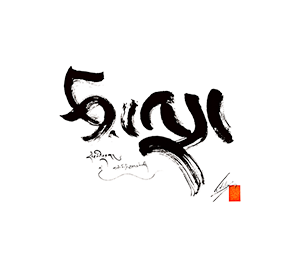For the origins of the
Mahāyāna we must agree with Hirakawa
[1] that while some
Mahāyāna doctrines are derived from the Mahāsāṃghika school, some others are derived from the Sarvāstivādin school. I would add that unless some other source can be pointed to, we may conclude that
Mahāyāna Buddhism in its various forms, at least leaving out the special development of Tantrism, can be traced to either the Mahāsāṃghika or the Sarvāstivādin schools.
It is well recognized by Buddhologists that the Mahāsāṃghika sect arose by a schism from the previously undivided Buddhist
saṃgha in the second century after the Buddha's Nirvāṇa (A.N.), leaving the other part of the
saṃgha to be called Sthavira. As to precisely when the schism occurred, there was a difference of opinion as to whether it happened as a result of the Second Buddhist Council (about 110 A.N.) over a laxity of
Vinaya rules by some monks, or happened later in the century (137 A.N.) over the five theses about Arhats and which occasioned a 'Third Buddhist Council' sponsored by the Kings Nanda and Mahāpadma. There were some other possibilities, as summarized by Nattier and Prebish,
[2] who conclude that the schism occurred 116 A.N. over
Vinaya rules, while the argument over
Arhat attainment provoked a further split within the already existing Mahāsāṃghika sect. It is immaterial for our purposes whether the 'five theses of Mahādeva' downgrading the
Arhat occasioned the schism between the Mahāsāṃghikas and the Sthaviras, or whether this downgrading was an internal argument within the Mahāsāṃghika. What is important here is that the downgrading of the
Arhat continued into a
Mahāyāna scripture called the
Śrīmālā-sūtra, and that the five theses are a characteristic of the Mahāsāṃghika, to wit: 1. Arhats are tempted by others, 2. they still have
ignorance, 3. they still have doubt, 4. they are liberated by others; and 5. the path is accompanied by utterance. The fifth of these seems explainable by other Mahāsāṃghika tenets, in Bareau's listing:
[3] No. 58 'morality is not mental'; No. 59 'morality does not follow upon thought'; No. 60 'virtue caused by a vow increases'; No. 61 'candor (
vijñapti) is virtue'; No. 62 'reticence (
avijñapti) is immoral.'
Part I of this paper attempts to relate the
Śrīmālā-sūtra and the
Tathāgatagarbha doctrine to the Mahāsaṃnghika school. Part II discusses the terms
dharmatā and
svabhāva so as to expose an ancient quarrel. (Wayman, introduction, 35–36)
